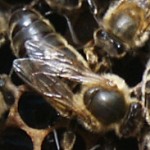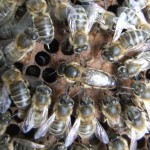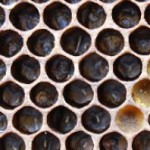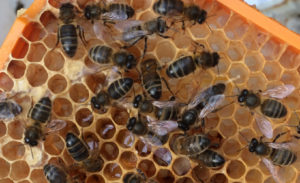When you receive your queen, I would suggest you first introduce her to a nuc of young queenless bees rather than directly trying to requeen a full colony, especially if it has been queenless for a long time and is full of older bees. Make sure the nuc has not started queen cells when you introduce the queen in her cage and after she is out of the cage check a few days later and remove any queen cells if present. Once the queen has been laying for a couple of weeks in the nuc, this can be combined with the colony to be requeened after removal of its queen.

If introducing the queen directly to a colony via an introduction cage, it is critical to establish that the colony is queenless. An absence of brood for several weeks does not mean that a colony is queenless as colonies like these often have a virgin queen or a non laying queen. The introduced queen is always killed in a colony like this. The workers in the colony will kill the introduced queen. The two queens do not meet to ‘fight it out’ as many seem to believe!

Test for queenlessness a few days before introducing your queen by inserting a test frame with small larvae on it. If the colony is truly queenless, queen cells will be drawn on this frame. If no cells are drawn the colony almost certainly has a queen in it and you will have to find it and remove it if you want to introduce another queen. The queen could be a scrub queen no bigger than a worker.
Avoid trying to requeen a colony which has been queenless for so long that it has developed laying workers. Although possible, your chance of success is low and an introduced queen will usually be killed. Good information about laying worker colonies can be found here.

You will have received your queen in an introduction cage of which there are several variants. The cage will be closed by a plastic tab or by tape.
There is no need to remove the attendants although many sources will argue that this is critical. I never remove attendants and I rarely lose a queen on introduction. Don’t spray the cage with water when you receive it as the bees and queen will die if they get wet & sticky. A single drop of water placed on top of the cage is more than enough. Don’t leave the cage somewhere hot where the fondant is likely to melt. Room temperature is ideal.

Put the cage in the colony for 24 hours suspended between two frames with the fondant at the bottom. After a day, check the cage and if the bees seem interested in the cage and non aggressive towards it, open the plastic tab and put the cage back in the colony in the same place. Leave for 2 days and check back that the queen is out of the cage.
If she is out of the cage, remove it and quickly close up the hive.
If she is still in the cage and the fondant has gone hard, scrape out a little but don’t manually release her unless you are confident that you can put her back in the cage if the bees start to attack her.
Check after a few days for eggs and when you see eggs close up quickly again. You don’t have to see the queen at this point. Remove any queen cells present. A hive with a new queen is still quite delicate and too much intrusion can lead to her being balled and killed.
Good luck with your new native queen.





